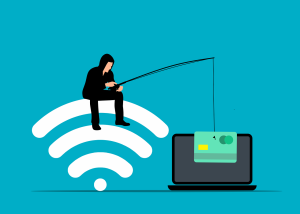In today’s ever-changing cybersecurity realm, social engineering remains the primary culprit behind a substantial portion of cyberattacks, comprising up to 90% of incidents.
Understanding Social Engineering
To grasp the significance of social engineering, it’s crucial to understand how it exploits human weaknesses, such as trust, fear, and compliance, to breach security. Additionally, it encompasses actions like clicking malicious links and sharing sensitive data. Nevertheless, the ‘Human Firewall’ poses a significant challenge for organizations combating social hacking.
Types of Social Engineering Attacks
Social engineering takes on various forms, each targeting specific vulnerabilities. To navigate this complex threat landscape, organizations must recognize these attack vectors:
Phishing: Deceptive messages trick individuals into revealing sensitive data or clicking malicious links. Meanwhile, Pretexting involves creating fake scenarios to extract information, often involving impersonation. On the other hand, Vishing utilizes voice-based phishing through phone calls to obtain data or credentials.
Why Social Engineering Persists
Social engineering succeeds by exploiting fundamental human traits like trust, fear, obedience, and the fear of missing out. What makes it particularly challenging is the fact that attackers require minimal technical skills, making it accessible to almost anyone with significant potential returns.
Real-World Examples: MGM and Caesars Hacks
In 2023, the MGM and Caesars breaches highlight the ongoing challenge posed by social hacking. The MGM breach saw Scattered Spider impersonate an employee found on LinkedIn, extracting credentials via phone calls, leading to substantial losses, operational disruption, and customer data exposure.
Motives Behind Social Hacking
Financial gain remains the primary motive for social hacking, involved in over 90% of cyber incidents. However, other motivations include corporate espionage, nation-state attacks, insider threats, and various forms of exploitation.
Mitigating Social Hacking Threats
Eliminating social hacking threats is complex due to the subjective nature of human decision-making. Organizations and individuals can reduce vulnerability through education and technical security measures.
In a digital world where humans are the weakest link in cybersecurity, social hacking remains a persistent threat. Understanding its psychology and techniques is crucial for bolstering defenses. While the allure of social hacking endures, vigilant education and robust security measures offer a path to enhanced resilience.
